![]()
![]()
![]()
Use LEFT and RIGHT arrow keys to navigate between flashcards;
Use UP and DOWN arrow keys to flip the card;
H to show hint;
A reads text to speech;
79 Cards in this Set
- Front
- Back
|
Bittersweet
|
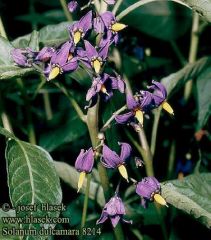
Identify.
|
|
|
Bittersweet
|
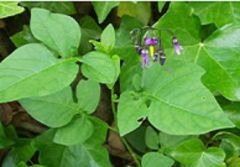
Identify.
|
|
|
Bittersweet
|

Identify.
|
|
|
Caladium spp.
|
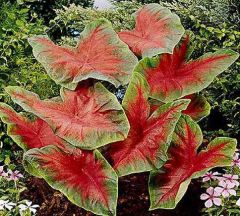
Identify.
|
|
|
Caladium spp.
|
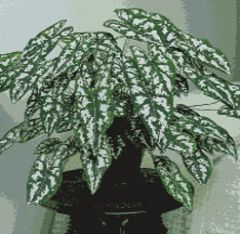
Identify.
|
|
|
Caladium spp.
|
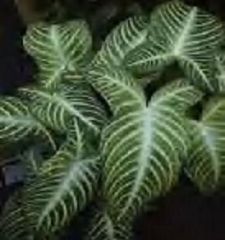
Identify.
|
|
|
Castor Bean
|

Identify.
|
|
|
Castor Bean
|
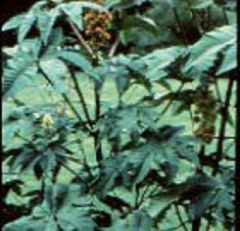
Identify.
|
|
|
Castor Bean
|
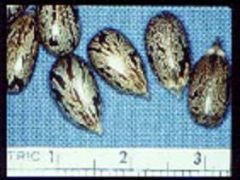
Identify.
|
|
|
Philodendron
|
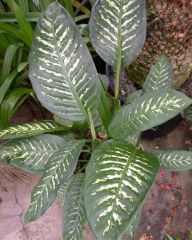
Identify.
|
|
|
Philodendron
|

Identify.
|
|
|
Pigweed
|

Identify.
|
|
|
Pigweed
|

Identify.
|
|
|
Pigweed
|

Identify.
|
|
|
Pigweed
|
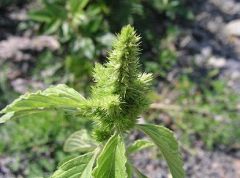
Identify.
|
|
|
Pigweed
|

Identify.
|
|
|
Pokeberry
|

Identify.
|
|
|
Pokeberry
|

Identify.
|
|
|
Pokeweed
|

Identify.
|
|
|
Pokeweed
|

Identify.
|
|
|
Pokeweed
|

Identify.
|
|
|
Pokeweed
|
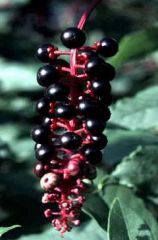
Identify.
|
|
|
Pokeweed
|

Identify.
|
|
|
Rosary Pea
|

Identify.
|
|
|
Rosary Pea
|

Identify.
|
|
|
Rosary Pea
|

Identify.
|
|
|
Zinc
a. common cause of poisoning b. signs c. toxicokinetic features d. dx e. tx |
a. pennies: copper & zinc alloy
b. start w/in a few days of ingestion vomiting, diarrhea, anorexia, CNS depression, ↓ milk yield, hemolysis, regenerative anemia, renal failure pica (large animals), spherocytosis, inflammatory leukogram rarely renal tubular changes, icterus c. 20-30% net absorption, widely distributed (highest to liver, kidney), induces metallothionein production d. rads, ↑ serum Zn levels, clinical signs, hx of exposure e. sx to remove pennies (endoscopic removal preferred) |
|
|
What are the 1st & 2nd generation anticoagulant rodenticides?
|
1st generation: warfarin, dicoumarol
2nd generation (more potent): diphacinone, brodifacoum |
|
|
What is the mode of action of the anticoagulant rodenticides?
|
prevent blood from clotting by irreversibly inhibiting vitamin K epoxide reductase, which is needed to convert inactive vitamin K epoxide to active vitamin K
vitamin K needed for clotting factors II, VII, IX, X clinical signs emerge once vitamin K dependent clotting factors are depleted: 8-24 hrs |
|
|
What are the clinical signs of anticoagulant rodenticide toxicosis?
|
depend on site at which bleeding occurs
warfarin: external sites (hematuria, melena, facial swelling, etc.) 2nd generation products: internal in order of decreasing frequency: dyspnea, lethargy, coughing/hemoptysis, pallor, epistaxis, vomiting, melena, lameness, hematochezia, SQ hemorrhage |
|
|
What are some tests used to dx anticoagulant rodenticide toxicosis?
|
ACT, OSPT, APTT should all be prolonged (OSPT becomes prolonged 1st)
-↑ ACT (100%), ↑ OSPT (94%), ↑ APTT (93%) -if ingestion just occurred, ACT will still be normal PIVKA Test (Thrombotest): very sensitive, but hard to interpret, expensive continued bleeding from venipuncture site is a clue clin path findings (in order of ↓ frequency): anemia (PCV < 35%), hypoproteinemia, thrombocytopenia, ↑ FDPs, hyperfibrinogenemia rads findings (in order of ↓ frequency): pleural effusion, pulmonary infiltrates, loss of abdominal detail, widened cranial mediastinum, normal, extraluminal tracheal compression |
|
|
What is the tx for anticoagulant rodenticide toxicosis if > 1/16 of lethal dose is ingested?
|
decontaminate GI tract w/ emetics, AC
monitor for depression, anorexia, hemorrhage |
|
|
What is the tx for anticoagulant rodenticide toxicosis if > 1/10 of lethal dose is ingested?
|
decontaminate GI tract
vitamin K1: will correct coagulopathy but may require 12-48 hrs before coag times normalize loading dose, then BID to TID, PO preferred warfarin: 7-10 d. brodifacoum: 21-30 d. reevaluate OSPT 36-48 hrs after cessation of tx high doses (esp. if given IV) may cause Heinz body anemia if ACT still ↑ after 1 mo. of tx, animal may not be absorbing vitamin K completely blood or fresh plasma transfusions -transfusion indicated if PCV < 20: need active clotting factors from fresh whole blood IV fluids: careful w/ IV catheters: if dog chew it out hemorrhage supplemental O2 |
|
|
White Clover
a. species most affected b. conditions of poisoning c. toxic principles & corresponding lesions |
a. sheep
b. moldy sweet clover hay c. glycoside w/ the aglycone coumarin --> hemorrhagic syndromes; phytoestrogens --> infertility |
|
|
What are the clinical signs of cholecalciferol rodenticide toxicosis?
|
w/in 12-36 hrs: signs d/t hypercalcemia
anorexia, depression, abdominal pain, vomiting (very common), dehydration, muscle weakness, constipation CV signs often not appreciated, but often have EKG abnormalities d/t hypercalcemia |
|
|
ddx for hypercalcemia
|
cholecalciferol toxicosis, hypercalcemia of malignancy (esp. LSA), pseudohyperparathyroidism, primary hyperparathyroidism, feed mixing error (↑ vitamin D in feed)
|
|
|
How would one dx cholecalciferol rodenticide poisoning?
|
gold standard: serum vitamin D conc.
rads to look for calcification (high Ca x P): doesn’t tell you anything about px clin path: hypercalcemia: often > 11 mg/dl hyperphosphatemia: develops w/in 24-48 hrs other changes may include: azotemia, hyperproteinemia, proteinuria, glucosuria, hyposthenuria, ↑ serum vitamin D |
|
|
How would one tx cholecalciferol rodenticide poisoning?
|
decontamination if < 4 hr. after ingestion: emetic, AC + saline cathartic
diuresis/calciuresis: normal saline & furosemide (PO BID-TID) high dose steroids: ↓ GI Ca absorption, ↑ urine Ca elimination (Pred PO BID) maintain furosemide & Pred PO for 2-3 wks salmon calcitonin: ↓ Ca absorption from GI tract (SQ q 2-3 hrs): use if animal got a really high dose pamidronate disodium (Aredia): bisphonate: inhibits bone resorption renal: +/- peritoneal dialysis CV: +/- tx for arrhythmias |
|
|
What are some major factors concerning the:
a. absorption b. metabolism c. excretion of ethylene glycol? |
a. rapidly absorbed, half life of 2.5-3.5 hrs in dogs
b. occurs in liver oxidation by alcohol dehydrogenase to glycoaldehyde: rate limiting step glycoaldehyde --> glycolic acid --> glyoxylic acid --> oxalic acid --> oxalate --> CaOx crystals c. excreted unchanged in urine |
|
|
What are the 3 stages of clinical signs assoc. w/ EG toxicosis?
|
stage 1: occurs w/in 30 min. to several hours
ataxia, “drunken appearance”, +/- CNS depression, PU, anorexia, hypothermia, vomiting if huge dose ingested: coma, death after stage 1, become asymptomatic for 12-24 hrs stage 2: occurs 12-24 hrs. after ingestion CV effects (rarely seen clinically in SA): tachypnea, tachycardia, or bradycardia stage 3: occurs 12-72 hrs. after ingestion (when animal is usually presented) -oliguric renal failure: renal pain, enlarged kidneys on palpation, dehydration, CNS depression, vomiting, PU --> oliguria/anuria -renal failure largely d/t crystalluria -seizures, oral ulcers, retinal detachment, retinal edema, anterior uveitis |
|
|
What are some clin path & U/A findings consistent w/ EG toxicosis?
|
stress leukogram, hemoconcentration, azotemia, hyperphosphatemia, hyperglycemia, hypocalcemia, hyperkalemia, metabolic acidosis, ↑ anion gap (> 25) & osmolal gap
isosthenuria, hematuria, proteinuria, glucosuria sediment: RBCs, WBCs, renal epi cells, casts, CaOx (monohydrate or dehydrate) & hippuric acid crystals |
|
|
How would one dx EG toxicosis?
|
CaOx crystalluria w/ ↑ AG is highly suggestive of EG toxicosis
also hx of exposure, clinical signs, metabolic acidosis, azotemia, dilute urine analysis for EG in blood or urine: practical only in early stages (< 24 hrs) analysis of serum for glycolic acid: possible for 3-60 hrs post ingestion EG test kits: lots of false negatives (only detects EG, not metabolites) |
|
|
What is the tx for EG toxicosis?
|
recent ingestion: emetics, AC, saline cathartic
ethanol or 4-methylpyrazole: inhibit alcohol dehydrogenase -not indicated for patients already in oliguric renal failure: will make it worse -maintain elevated blood level for up to 72 hrs sodium bicarb to tx metabolic acidosis fluids + dopamine diuretics if anuric or pulmonary edema +/- dialysis |
|
|
What are some prognostic indicators for EG toxicosis?
|
dogs w/ very low blood pH, severe base deficit, & high venous PO2 (assoc. w/ ↑ RR & ↓ activity) less likely to respond to tx
at 30 hrs post exposure, persistence of hypothermia, hypocalcemia, hyperkalemia, & elevated BUN & creatinine indicate a poor px if presented in coma: poor px |
|
|
propylene glycol
a. sources b. clinical signs of toxicosis in cats c. clinical signs of toxicosis in horses |
a. preservative & carb source in moist pet food; in some antifreezes
b. ↑ in Heinz body production & hemolytic anemia c. salivation, ataxia, pain, abnormal breath odor, rapid shallow breathing, cyanosis, death |
|
|
lilies
a. species most commonly affected b. clinical signs of toxicosis c. lesions d. tx |
a. cats
b. occur w/in hours of ingestion -CNS depression, vomiting, oliguria, adynamic ileus c. acute nephrotoxic tubular necrosis d. emetic, AC, cathartic if recent ingestion |
|
|
What are some plants that contain oxalates?
|
pigweed
greasewood halogeton |
|
|
oxalate containing plants
a. effects b. clinical signs |
a.
soluble more toxic than insoluble oxalic acid absorbed & complexes w/ calcium in blood stream --> CaOx, hypocalemia --> muscle tremors, weakness, collapse, eventually death oxalates directly toxic to mitochondria --> inhibit ATP production chronic oxalate poisoning: insoluble CaOx --> nephrosis Mg can also complex w/ oxalic acid to some extent --> hypomagnesemia b. muscle tremors, tetany, weakness, reluctance to move, depression, recumbency coma & death may result w/in 12 hrs renal failure: severe depression, anorexia, coma, death chronic Ca deficiency: most common in horses |
|
|
pigweed
a. species most commonly affected b. toxic principles c. clinical signs d. dx e. tx f. prevention |
a. pigs
b. oxalate (up to 30% dry weight): leaves have 3x more than stems nitrate (< 3%) unknown agent: perirenal edema, nephrosis c. perirenal edema, nephrosis (unique to pigweed) onset: 5-10 days after initial ingestion ataxia, weakness, tremors, knuckling at pasterns, sternal recumbency, flaccid paresis of hind limbs, distended abdomen, sit like a dog subsequently develop coma & die w/in 48 hrs of onset of signs 5-50% mortality d. ID of plant, evidence of consumption, clinical signs, lesions e. remove plant, avoid stress & dehydration f. mow, then spray w/ herbicide: spraying may ↑ nitrate accumulation remove all animals from pasture for 1 wk. following spraying |
|
|
halogeton
a. species most commonly affected b. lesions |
a. sheep
b. CaOx crystalluria --> renal failure |
|
|
oak
a. conditions of poisoning b. toxic principles c. clinical signs |
a.
affects cattle, sheep, horses, pigs consumption of oak buds can be markedly ↑ in late spring snowstorm as leaves mature, become less toxic ripe acorns less toxic than when green b. gallotannin (GI irritant): reacts w/ cell proteins to denature them --> cell death most severe lesions in kidneys, liver, GI tract acorns contain tannic acid goats & wild ruminants better able to detoxify b/c they have a tannin binding protein in their saliva: neutralizes tannic acid c. anorexia, depression, intestinal stasis, +/- PU/PD, black tarry diarrhea, teeth grinding & hunched back (colic), icterus, red urine, dehydration animals may live 5-7 days after onset of clinical signs |
|
|
rhubarb
a. toxic principles & effects |
a.
leaf blades contain oxalic acid, CaOx, KOx oxalate interferes w/ energy metabolism --> death also contains anthraquinone glycosides: cathartic |
|
|
red maple
a. clinical signs b. lesions c. tx |
a. develop 2-3 days post ingestion
anorexia, depression, icterus, dehydration, weakness, tachycardia, brown mm, dark brown urine, coma, death, splenomegaly (2º to anemia) causes methemoglobinemia, methemoglobinuria, hemolytic anemia --> pigment nephropathy b. dark brown tissues, icterus, splenomegaly, swollen dark kidneys (prox. tubular epithelial necrosis, Hg cast formation), Heinz bodies c. if recent ingestion: give ~ 1 lb. AC else tx methemoglobinemia w/ methylene blue: animals usually don’t do well |
|
|
ochratoxin-A
a. source b. lesions in pigs c. lesions in poultry |
a. mycotoxin from Penicllium, Aspergillus
b. marked interstitial fibrosis, prox. tubular injury in swine (porcine nephropathy), immunosuppressive, urinary tract carcinogen c. ascites |
|
|
blister beetles
a. conditions of poisoning b. toxic principle c. clinical signs |
a. alfalfa hay that has been contaminated w/ blister beetles
b. cantharidin: highly irritating, causes acantholysis & vesicle formation when in contact w/ skin or mm c. mild depression or discomfort to severe pain, shock, & death GI & urinary tract irritation, endotoxemia, hypocalcemia, myocardial dysfunction, sweating, delayed CRT, tachycardia, tachypnea, pyrexia cantharidin heavily excreted in urine --> mm irritation of ureter, vulva, etc. (+/- blisters), stranguria, incomplete urine stream horses that ingest a massive amt. of toxin may show signs of severe shocks & die w/in hours (rare) |
|
|
blister beetles
a. dx b. tx c. px |
a. ID of beetles
definitive: measure cantharidin conc. in blood or urine: conc. in urine becomes negligible in 3-4 days gastric contents: insect fragments clin path: hypocalcemia, hypomagnesemia, hyposthenuria, hematuria, hyperglycemia, mildly ↑ BUN, creatinine b. oral administration of mineral oil: evacuation of GI tract, may have to do repeated dosing AC Ca, Mg supplementation symptomatic therapy: fluids, analgesics, diuretics, tx acid/base, electrolyte disturbances c. most cases resolve on own |
|
|
What is a general scheme for tx of GI toxicosis?
|
recent ingestion: emetic, AC +/- saline or osmotic cathartic
symptomatic & supportive tx: fluids, etc. sucralfate: coats GI tract, protects from ulceration H2 receptor antagonists (ex. cimetidine): ↓ acid production in stomach metoclopramide: controls vomiting |
|
|
What plants are oral irritants?
|
philodendron, caladium spp., dieffenbachia (dumb cane), Araceae family (Calla lily, Ceriman, Jack in the Pulpit)
|
|
|
philodendron
a. toxic principles b. clinical signs c. tx |
a. proteinaceous toxin (asparagines or protoanemoin)
histamine release --> immediate pain contains needle like CaOx crystals (raphides): released when plant cell wall is damaged --> oral irritation also contain resorcinols: allergic contact dermatitis b. inflammation of mouth & throat, skin irritation (blistering from sap), occ. renal lesions (fron CaOx crystalluria), rarely death from choking immediate pain limits amt. consumed c. give milk following ingestion: Ca source that keeps oxalates in GI tract in insoluble form: not absorbed antihistamines if swelling occurs, general nursing care |
|
|
What are some plants that mainly cause just vomiting?
|
Amaryllidaceae family (Narcissus spp: narcissus, jonquil, daffodil), Amaryllis
|
|
|
What are some plants that cause vomiting & diarrhea?
|
pokeweed (saponins), Saponaria spp., Ranunculaceae family (glycosides): buttercup, baneberry, marsh marigold, Clematis spp
|
|
|
Amaryllidaceae
a. part of plant that's toxic b. toxic principle c. clinical signs |
a. bulb
b. contain alkaloids, one of which is lycorine: emetic toxin c. cause vomiting that often resolves w/in 24-36 hrs also cause contact dermatitis d/t irritation from alkaloids or CaOx contained in bulbs |
|
|
pokeweed
a. toxic principles b. conditions of toxicity c. clinical signs d. tx |
a. saponins: dissolve cell mems (act as detergents) --> GI tract irritation; bitter tasting
glycosides alkaloids: phytolaccine, phytolaccotoxin lectin: inhibits protein synthesis by inactivating rRNA b. all parts of plant are toxic toxicity of berries ↓ as they mature fatality has resulted from consumption of root 2-3 berries may be fatal to a child dilution & possibly degradation in rumen may explain absence of some of toxic effects seen in ruminants c. severe gastroenteritis: 2-3 hr. latent period followed by nausea, vomiting, hemorrhagic diarrhea generally recover w/in 24-48 hrs d. emetic, AC + saline cathartic if recent ingestion control dehydration, seizures, & institute artificial respiration if necessary |
|
|
buttercup
a. toxic principles b. clinical signs c. tx |
a. ranunculin (nontoxic glycoside): found in all parts of plant: forms protoanemonin: irritant volatile oil
+/- anemonol (alcohol) drying destroys toxicity b. ingestion: gastroenteritis, vomiting, bloody diarrhea, +/- hematuria, rarely convulsions & death c. symptomatic, supportive (emetic, AC) |
|
|
What are some plants that cause gastroenteritis that can be fatal?
|
cochicine: crocus, meadow saffron
solanine: nightshades (incl. bittersweet), jessamines, ground cherries toxalbumins: castor bean, rosary pea, European mistletoe |
|
|
Bittersweet (Nightshades)
a. toxic principles b. clinical signs |
a. solanine (an alkaloid), plus several other alkaloids
highest concentration in green berries, but varies w/ soil, climate, & season nitrate accumulators: can produce nitrate toxicity in LA b. alkaloid causes fairly severe GI irritation --> bloating, anorexia, vomiting, abdominal pain, diarrhea pyrexia, headache |
|
|
Castor Bean
a. species most commonly affected b. toxic principle c. clinical signs if inhaled d. clinical signs if ingested e. dx f. tx |
a. cattle, horses
b. ricin: blocks protein synthesis c. severe pulmonary edema, fibropurulent pneumonia, tracheitis, death w/in 36-48 hrs d. severe GI irritation, vomiting, diarrhea, nausea, GI ulceration, & hemorrhage (w/in 1-2 hrs), necrosis of liver, spleen, & kidneys, leukocytosis, death w/in 1-3 days e. generally based on hx of exposure -ELISA of airway swabs (inhalation) or blood: circulating Abs develop w/in 1-2 weeks of exposure f. symptomatic, supportive (emetic, AC if known exposure) |
|
|
Rosary Pea
a. toxic principle b. clinical signs |
a. contains toxalbumin: abrum
b. same as for castor beans: acute onset gastroenteritis, multiple organ failure |
|
|
inorganic arsenic
a. stable oxidation states b. sources c. conditions of poisoning d. distribution in body |
a. As (III) ~ 60x more toxic than As (V)
b. smelters, pesticides, herbicides (rare), vintners, most soil has trace amts c. accidental exposure to pesticides, contaminated water: SW US, burning of wood treated w/ arsenical preservatives d. stored mainly in liver, kidneys, heart, & lungs, w/ smaller amts in muscle & nervous tissue deposited in hair & nails & remains fixed to keratin for years deposited in bones & teeth |
|
|
inorganic arsenic
a. mode of action b. clinical signs c. dx |
a. inactivates up to 200 enzymes: cellular energy pathways, DNA replication & repair, etc.
substituted for phosphate in high energy compounds such as ATP trivalent: binds thiol & sulfhydryl groups in tissue proteins --> protein inactivation pentavalent: uncouple oxidative phosphorylation b. most common presentation: sudden death vomiting (w/in 30 min. of ingestion), abdominal pain, profuse watery diarrhea (+/- blood), excessive salivation, tremors, ataxia, weakness, hypotension, shock, tachycardia, prolongation of QT, V fib severe vomiting & diarrhea --> shock --> multi-organ failure --> death, usually w/in 12-24 hrs c. HGE, liver & kidney arsenic concentrations, ↑ urine arsenic conc. suspect As toxicosis in animal w/ ACUTE severe hemorrhagic diarrhea drinking water containing > 0.25% arsenic potentially toxic, esp. for large animals |
|
|
What is the tx for inorganic arsenic poisoning?
|
generally don’t give emetic: animal almost always already vomiting from As
activated charcoal sodium thiosulfate: chelates arsenic in GI tract (PO): rarely found at pharmacy other arsenic chelators: given for 2-4 days dimercaprol (BAL): given IV or IM; GI effects of arsenic continue D-penicillamine, DMPS, DMSA: given PO; ↓ GI absorption (preferred); less toxic & more effective than BAL GI protectants: kaolin-pectin supportive therapy: fluids monitor liver & kidney function during tx |
|
|
organic arsenic
a. conditions of poisonings b. clinical signs c. dx d. tx e. px |
a. organic less toxic than inorganic
b. misformulated feed: used as feed additives to improve production in swine & poultry rations & to tx dysentery in pigs b. pigs: ↓ wt. gain, incoordination, blindness, posterior paralysis, quadriplegia; animal remains alert w/ good appetite c. hx of arsenicals added to feed in improper dosage d. no specific tx e. neurotoxic effects usually reversible if feed is withdrawn w/in 2-3 days of onset of ataxia once paralysis occurs, nerve damage is irreversible blindness is irreversible |
|
|
What are ddx for neurological signs in pigs?
|
organic arsenic poisoning, salt poisoning, botulism, lead or mercury toxicosis, vitamin A def., pseudorabies
|
|
|
iron toxicosis: SA
a. conditions of poisoning in SA b. absorption |
a. human multivitamins
b. well regulated: 2-15% net absorption absorption of ferrous ions into mucosal cells transfer to plasma: facilitated by binding to transferrin ferrous iron in plasma oxidized by ferroxidase I (ceruloplasmin) O2 free radicals produced by conversion of Fe (II) --> Fe (III) |
|
|
iron toxicosis: SA
a. dx b. tx in SA |
a. serum iron conc.
normal: 50-150 mg/dl peak levels occur 2-4 hrs post ingestion, although generally remains elevated thru stage 3 >350 mg/dl correlates w/ systemic toxicity b. o gastric decontamination: AC generally doesn’t work well since Fe is a small molecule, but give anyway deferoxamine: iron chelating agent of choice available at most pharmacies iron-deferoxamine complex excreted in urine & gives urine characteristic ‘vin rose’ (reddish) appearance continue administration until urine returns to normal must differentiate from hematuria |
|
|
What are the 4 stages of clinical signs seen in iron toxicosis in small animals?
|
stage 1: w/in 6 hrs of ingestion
local corrosive effects in gut lumen --> vomiting, diarrhea (often bloody), abdominal pain GI ulceration, perforation can occur w/in 4-6 hrs hypotension, acidosis 2º to GI losses of fluid & blood many animals die at this stage stage 2: 6-14 hrs signs typically stabilize or improve as free plasma iron moves into cells stage 3: 16-24 hrs multiple organ failure: iron directly toxic to liver, myocardium, kidney, CNS stage 4: marked local GI corrosion & scarring, w/ subsequent luminal obstruction |
|
|
iron toxicosis in newborn pigs
a. conditions of poisoning b. possible manifestations of toxicosis |
a. SQ or IM injection of iron preparations
b. joint swelling/pain, damage to muscle at injection site, tremors, convulsions, resp. distress, immunosuppression --> E. coli enteritis (assoc. w/ vit E or selenium def.), hard swellings at injection site, sudden death |
|
|
NSAID toxicosis in SA
a. clinical signs b. dx |
a. vomiting, diarrhea, gastric ulceration +/- hemorrhage +/- perforation
ARF: renal blood flow highly dependent on PGs seizure, death may occur w/in hours if massive amt. ingested b. hx of exposure, may be able to appreciate concretions of pills on rads if huge dose ingested |
|
|
What is the tx for NSAID toxicosis in SA?
|
recent ingestion (< 2 hrs)
emetic, AC +/- saline or osmotic cathartic: often not very effective w/ low doses d/t rapid absorption of NSAIDs from GI tract -repeated AC may be needed since some undergo enterohepatic recirculation gastric lavage if concretions form symptomatic & supportive tx assisted ventilation +/- O2 control seizures control hypotension & hemorrhage: fluids +/- dopamine or dobutamine (to maintain renal blood flow) peritoneal dialysis sucralfate PO q 8-12 hrs: coats GI tract, protects from ulceration H2 receptor antagonists (ex. cimetidine): IM, IV, or PO TID -some NSAIDs may cause ↑ acid production in stomach metoclopramide PO or SQ q 6-8 hrs: controls vomiting misoprostol: synthetic PGE1 analog -used to prevent aspirin induced gastric ulcers -not recommended after ulcer formation: doesn’t work as well |

